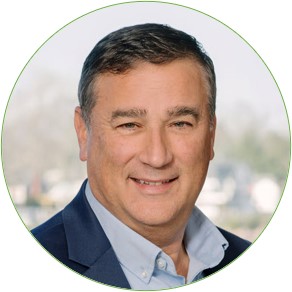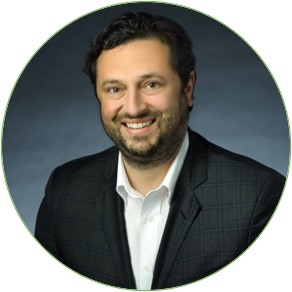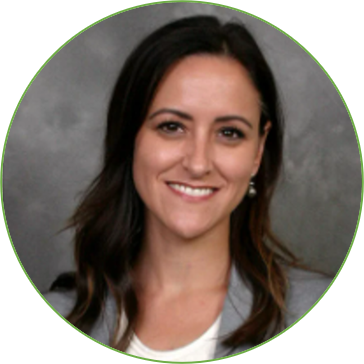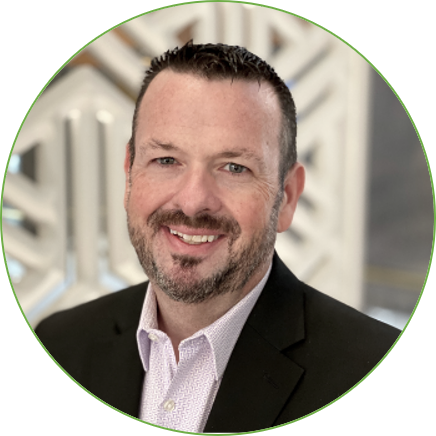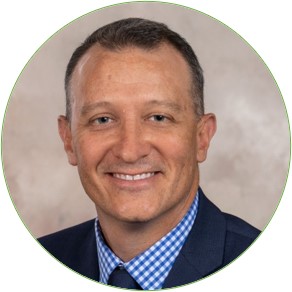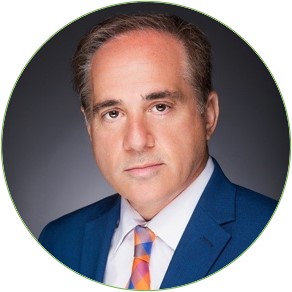Jon reveals the intriguing origin story of telehealth at Lee Health, beginning with a focus on stroke care to overcome geographical challenges and improve patient outcomes. Learn about the innovative programs at Lee Health that propelled virtual care from a niche service to a comprehensive strategy encompassing inpatient, outpatient, ambulatory, and population health.
Read the Transcript
Welcome to Digital Health Frontiers, where we explore the cutting edge of healthcare technology, policy, and innovation, hosted by Mike Brandofino, president and COO of Caregility. Today, Mike is talking to Jonathan Witenko, the system director of virtual health and telemedicine at Florida-based Lee Health. Holding multiple certifications from CHIME, Microsoft, Cisco, and others, Jon helped design and implement telehealth at Lee Health in 2014 with inpatient stroke and over the years grew the program from one project to a systematic rollout of inpatient, outpatient, ambulatory, and population health programs. Lee Health is a great example of how virtual care has evolved from a nice-to-have to a critical application. In this episode, Mike talks to Jon about this transformation along with the responsibilities and new challenges it brings to healthcare.
Mike Brandofino:
Hi everybody. Welcome to Caregility’s podcast. Virtual care has been around for many years, but recently it’s kind of gone from nice-to-have to a critical application, and I’m happy to have with me Jon Witenko, who drives virtual health for Lee Health system to talk about that path, that journey, if you will, from nice-to-have to critical. Thanks for joining us, Jon.
Jon Witenko:
Absolutely. Good to see you, Mike.
Brandofino:
So if you could share with everybody, how did it start? So when virtual care started for you and Lee, what was it like? What were the challenges you were facing and how many people were involved?
Witenko:
Yeah, absolutely. So we started virtual care actually in 2014. It was a one-off project. We had a group of neurologists, excuse me, that were doing stroke care. And geographically, one of the challenges is there’s non-value added time of driving from hospital to hospital. So ideal state, we’d have a neurologist sitting there 24/7 twiddling their thumbs, waiting for patients to come in and have a stroke. Well, the reality is it’s not cost-effective. So we have one physician covering four or five different hospitals, and depending on where the patient comes in, they may have to drive from facility to facility. And this is the model that’s existed for a hundred years, as long as we’ve had hospitals. Well, contractually we’re facing that issue of the windshield time, as they call it, of driving from hospital to hospital. And the patient, all the time, has this block in their brain, a brain bleed, and I’m not adding any value just sitting in the car.
So can you do something cool to help that? Can you teleport me? Can you do something? And so that’s where for us, telehealth was part of everybody back in the day, 10 years ago was, alright, you either start with behavioral health, the clear Baker Act, or you start with stroke. And so for right, wrong, or indifferent, we started with stroke and I started working with Dr. Carracino at the time who was our neurologist and I think maybe had been our CMIO, I’m not sure his role, but was a neurologist taking call and said, all right, what does this look like? And I said, well, I am not a clinician. I’m an engineer by trade, a computer engineer, so tell me what you need. And he said, well, for me to do an assessment, I need look in the patient’s eyes, see their pupil dilation, hear their speech, do they have a tremor? Are they coherent? And then a little bit of a physical assessment. So they have to squeeze and range of motion kind of things. Okay, so do you need to physically touch the patient?
He said, other than the squeeze and there’s a stroke scale, but somebody else in the room could do that. Okay. I said, well just get the doc on site to do all that stuff. He said, no, that’s why I went to neurology school. I’m specifically trained and I have to make an evaluation. Do I give this patient TPA this drug or not? I’m the only person, it has to be a neurologist that gives that order. Okay, so let’s figure out, can we do it with a camera and what does that look like? Let’s just put a webcam in the room. Again, this is 10 years ago and there wasn’t a lot of folks doing it. And so we really started to look at who’s building a telemedicine cart, if you will. And there were a couple of big-name vendors, but it was really cost-prohibitive. It was about $80,000 a cart for a beautiful touch model. And we said, well, we don’t have that much money. We have about a hundred grand and we have five different hospitals, so we can’t divvy it up and get it in the car and drive it.
So we ended up buying the technology. I built the carts myself in my garage and we put it out there and then crossed our fingers and said, okay, does this work? And Dr. Carracino came in, he was actually the first one to use it and he came in one day and he goes, Jon, great news. Last night, I’m sitting at home and the phone rings. And he goes, well, it’s at Gulf Coast. And at the time they couldn’t get paid for telehealth. He said, I’m just going to drive into the office. I live two minutes away. I’m going to drive in. Well as I’m about to drive in, the phone rings again or the pager goes off, I get a second consult. And this one was for across town, across the bridge. He said, uh-oh, now that’s the defining moment. I have two stroke alerts. Usually never happens. You get about one every two hours and I have two in a minute, so I’m going to have to use telehealth. So he gets on and all of a sudden a third page and then a fourth page while he was on. So within a 15-minute span, he had four pages for three different hospitals, different patients, all this stuff.
I said, well, what happened? He said, no big deal. I saved four people and triaged appropriately and saved them all. I said, well, what would you have done last week if we didn’t have this system? And he said, well, I would’ve triaged and picked the younger patient or the most important – whatever I would’ve based on protocols – and I would’ve seen one out of the four, and the other three would’ve had months of rehab or maybe not made it or whatever it was. And so at that point, he was bought in and it became, we transitioned it from, okay, we’re going to somewhat use it to, no, this is the way you have to do care because the old way is no longer safe. We can no longer wait 45 minutes to see the doc. We need to see him in three minutes. Sure. We quickly transitioned over and then it became the next, goodness, five years let’s say, until COVID, of expanding that, taking that vision out to the organization and the community, and saying, this is beneficial. This is a game-changer for us to deliver care not only for the physicians. Yes, it’s convenient for the system, it’s more financially feasible.
And for the patients, again, back in the day, reluctant – why do I have to see a guy on a TV? Well, okay, the alternative is you wait 45 minutes while your brain is incapacitated. Alright, fine. I’ll see somebody now. And so it was a little bit of evangelism. It was a little bit of goodwill and talking about benefits and selling the concept and then COVID happened.
Brandofino:
Yeah, that’s interesting because obviously telestroke has been around a long time and it’s interesting to hear the stories about how it got started and then you kind of think to yourself, wow, how did we ever operate without it? Right. You mentioned COVID. Was that the watershed moment for you guys at Lee where it obviously sounds like stroke became a critical app earlier, but where virtual care in general, this whole idea of hybrid care, was that the watershed moment for you and the executive team at Lee?
Witenko:
Yeah, absolutely. I remember actually December of 2019 it was, I presented to our senior leaders, our board of directors – here’s what we’re doing with telehealth and here’s the vision, here’s the plan. And it was met with a little reluctance of it’s great and all it has specific niche use cases, behavioral health, neurology, hard-to-reach, niche environments, genetics, et cetera. But for the bulk of it, internal medicine, no, we can see the patient all day long. And really the challenge was we weren’t getting paid. Unfortunately, we’re a mission-based organization, but at the end of the day, no margin, no mission. How do you financially feed the beast without reimbursement? It’s beneficial, saving lives, all this stuff, but if you don’t get paid from insurance… And so I think we were always waiting, we’re in a non-parity state in the state of Florida, and so we’re waiting and watching. Goodness, 30 of our fellow states in the nation had passed this, but Florida hadn’t. So we’re stuck and struggling. And then the senior leaders are like, it’s great, but just continue to kind of grow and grow and grow and we’re not going to expend a lot of time, energy, resources into this.
And then March of 2020, so four months later, three months later, we were looking going, okay, this is where we want to go and this is a slow and steady progression, and then suddenly we shut our doors just like everybody else. And I remember getting on a call, I was on spring break with my family and I get a call from the senior leaders and they’re like, Hey, that telehealth thing you were talking about, we need it now. Okay, well it’s going to take, and they said, and we need it by Friday. I was like, well, today’s Wednesday. What do you mean by Friday? And they said, well, we’re shutting down everything. We’re going a hundred percent virtual. Well, our system can handle five at a time, and we needed to flip that over to 500 at a time or a thousand at a time.
So that became the moment of, wow, this is how we’re going to not just improve business, but this is how we’re going to sustain as a company. We either shut our doors and safely distance from patients, or we pivot. And so it became we need to pivot now.
Brandofino:
And I remember going through that with you guys and it was a crazy time with you and obviously a lot of other customers. And so that was definitely I think a watershed moment for the healthcare industry to figure out how we can continue to operate and give care during the global pandemic. But then coming out of that, it’s kind of interesting to me that during that time, I think most of the focus and even the media’s attention was on that physician/patient – I can’t see them in person, so I’m going to schedule a remote telehealth session with them and give them a prescription – that outpatient model was most focused on. But the interesting thing coming out of COVID, what we’ve seen and we’ve seen it with you guys as well, is expanding programs on the inpatient side and how this hybrid model has really started to take off. And I’m wondering if at some point it’s table stakes to be able to see and hear in every room. And so maybe you can talk a little bit about the expanding programs now on the inpatient side and what your thoughts are around – do we take the word “tele” out of healthcare now and is it just how we deliver healthcare?
Witenko:
I love that line. Yeah, it’s interesting. Again, it’s hard being an evangelist, a prophet in your own land, if you will. And as we’ve been beating the drum, and I remember sitting probably, I don’t know, April, May of 2020, my parents called me up and they’re like, we’re seeing our doctor over telehealth. Do you know anything about this? And I was like, this is what I’ve been doing for the last five years. And they finally understood it. And I think a lot of folks are still of that mindset. It’s taken a while. I mean, I sat in a meeting this week as we’re talking about, we will shift to inpatient in a second, but for ambulatory, how do we move from, sure, we have some docs doing it, but we’re not a high percent. Three, four percent of our visits from an ambulatory perspective are telehealth and we’re pieces and parcels.
But we have newer physicians coming in out of residency saying, okay, what day is my telehealth day? And that’s not a like, Hey, I’d really love to do this, that’s a demand coming in of which day. Okay, great, I’m in the clinic four days, which day am I at home? And it’s no longer a bargaining tactic, it’s really, this is my demand coming in. And we’re trying to figure that out. So again, we’re a little slow strategically, how do we move to a virtual-first model? The effecient ones aren’t, okay, I’ll do telehealth one out of every 17 visits. That doesn’t work. It needs to be batched. So we had a physician call out the other day and they said, Hey, I’m sick. I can’t get kid care or whatever. I’m switching to virtual today. And our system’s broken and it was like, no, we need three weeks a month to schedule you out. And it’s like, so some of the tools are still slow to adopt. How do we change that visit type, immediately switch the whole thing. And we’re still of the mindset of, well, come into the office. This is what we’ve done for, like Henry Ford, this is how the factory runs. We’ve done this for a hundred years. And shifting that thinking is a little tough. It requires a little more thought of what’s more efficient.
And then moving to the inpatient model, it’s the same kind of thing. We’ve done nursing forever. We know nurses at the bedside. It works all day long, this is what they do. And suddenly we’re starting this virtual nursing program and we’re met with some cultural reluctance of is this really going to work? Are we going to, it’s an extra cost. Well, it is if you’re thinking short term, if you’re thinking shortsighted, yes, we have to put another person in the room, we have to staff this. So there is an extra layer of cost to it. But then you start looking at the efficiencies. I was looking last night, our time to discharge, M7, length of stay, readmissions, education, patient satisfaction, everything is through the roof.
Brandofino:
Nice.
Witenko:
So it’s a little bit different of that ROI model of how you can’t just look at, yes, it’s an extra cost, but it’s really the big picture of what is the cost to deliver care, and then when does this become part of the standard? As you said, it’s no longer the virtual care, it’s part of your care team. It’s part of the expectation. I come in the hospital, I want that. We’re calling it internally the operation warm hug of I want to know that you’re there for me when I need it, and I want to know that you’re there for me when I don’t know I need it.
Brandofino:
Right, right. Yeah. It’s got to be part of the healthcare process because you never know when you’re going to need it. Right. So you were there at the beginning, you made it through COVID. We all kind of weathered the storm and we’re seeing growth in Lee’s expanding programs. What has changed in that time from an executive involvement and oversight on these programs and the exposure? It would seem like it’s now reached the top levels and it’s no longer just you and Dr. Carracino going off and doing some things. So what has changed as this has become more critical?
Witenko:
Yeah, I think COVID revealed a lot of stuff. One, it changed the consumer expectations and perceptions of, Hey, I want that personalization. I want care the way I want it. So we’ve had to rethink a lot of stuff in terms of simplest notifications. Do you want to be called, do you want to be texted? Do you want a hot air balloon? We’re dealing with a patient right now who said, I don’t want you to call. Okay, well, so we’re having to trigger those individual notifications, and it’s the same as, why do I have to be seen in person? I’m going to come in for my follow-up to read an X-ray that I already have the results immediately through my patient portal. You’re going to make me come in? Again, some of it is stuck in the old way. So what I’m enjoying now is the conversation has shifted from reactionary to how do we really want to deliver care and what do our patients want, what do we want?
It can’t just be great for the patients. That may not work for us. And it can’t just be great for the docs. It can’t just be great for the system. It has to be a mutually beneficial relationship of saying, you know what? One out of every – let’s say you come into the PCP twice a year above 65 kind of wellness – so one of those is in person, one of those is virtual and pushing that. So maybe some patients can’t. I get health equity and we’ve got to make sure everybody’s on the same page, but we need to figure out that better model. And those are the conversations we’re getting to have now, wrestling through not from a reactionary of, Hey, let’s just put it in, we’ll figure it out later and let the chips fall as they may – now it becomes the pragmatic question of we’re struggling with resources, reimbursement is getting cut constantly. We just went through cat five hurricane, so that’s a whole separate issue. So now how do we think smarter? And we brought in new leaders, we’re looking at the system saying, what is our strategic course of events? How do we compete in the competitive landscape? And so it really becomes that proactive, let’s make intentional, targeted, rational decisions about the future of care delivery. And those are the fun. I mean, it is painful, it’s exhausting, it’s deep, it’s heavy. But those are the good conversations rather than lemme just put out another fire.
Brandofino:
The competitive nature of health systems is something that I learned as I got involved in healthcare when we launched Caregility and it was a surprise to me, and I think it was actually you that said to me or maybe Dr. Carracino, we want to own the experience throughout the continuum of healthcare for our patients. And that’s why it was so important for you guys when you expanded the outpatient to continue that experience and give that to patients throughout. And so it’s just great to see you guys driving that vision. And it is a competitive thing. If you can capture those patients and give them a quality experience, they’re going to stay with you throughout their healthcare continuum.
Witenko:
And again, you really have one shot to win the patient, to lose the patient. Really gone are the days where, okay, I’m going to experience quality care. We can stand on that quality. Well, everybody should be doing quality. There’s enough data out there and metrics that you’re getting a quality experience. Now it becomes how efficient are they, how optimal are they? Are we getting you out sooner? As beautiful as our hospitals are, nobody wants to sit there. I’d rather spend a week on a cruise than a week in our hospital, better food, prettier view, all that kind of goodness. And with insurance, probably it’s a lot cheaper to be on the cruise. So how can you get me out sooner and while I’m there make it as enjoyable as experience?
So as I’m sitting there watching the virtual nurses, they’re connecting with their patients. The normal bedside nurse is so busy, we’ve layered so many things on those poor nurses and they run in the room, they do their task and they’re out. Well, the virtual nurse has not flex time, but the ability to come in the room. They’re not there for that quick or they’re doing multiple, they’re able to multitask. They’re not transactional. They come in and they’re starting to be relational. And this is where you run into the culture rub of why do they know my virtual nurse? The virtual nurse isn’t the one that cared for them. I’m the one that put the bed pan there, They should love me. And all these survey scores are coming back saying, I love my virtual nurse. And so again, it’s creating that friction point. We as a system, but overall the benefit for the patient, the patients love it. You’re getting that individualized attention, that care, that connection that you’re getting me out sooner. You’re getting me seen, you’re bringing in my wife to a conversation, the translator, the education, all those components right there at their fingertips. And that’s what rather than, all right, I’ll sit in the room and listen to watch The Price Is Right on reruns again, they really want that. Give me an experience. I can get it home. And then that becomes, that’s what we’re working on now. That hospital at home is really that end goal. I don’t want to sit in your hospital. I don’t want to acquire something else while I’m there or get more sick. Can I do the same safe treatment at home? And what does that look like? And logistics and food and DME and all that kind of stuff. But it’s doable. There’s programs out there that are running a hospital at home. It’s how we delivered care a hundred years ago. So that paradigm’s going to shift, I think massively heavy in the next probably 20 years.
Brandofino:
So Jon, fast forward three years, what do you vision? What’s your vision for Lee? I know we’ve talked about a lot of different things, but what would you like to see or where would you like to see Lee be in three to five years?
Witenko:
So I saw something recently, and I don’t know if it was Mayo or Cleveland Clinic. I kind of give them credit of it: The room is aware of me. And so it’s not, the room becomes part of the care team and suddenly now you start layering AI on top of that and the room is cognizantly aware and contributing to the care team. So it’s saying, Hey, this patient is sleeping. Whatever state they’re in, their patient is sleeping, they’re agitated, their voice as we’re rolling out voice detection kind of stuff from a security aspect. But what if it’s the same in the room? Hey, this patient is depressed, the patient hasn’t seen anybody. There’s been no visitors for a day. Let’s send our therapy dogs in there or whatever. So having that awareness of the room, of the state of the patient, or do we need to, is the patient in distress physically? We can start looking at the vitals in the room? Can we start to record just the temperature of the room or then the patient’s gone, okay, can we make sure the room’s turned over for the next patient? Those type of things – we become more efficient as a system. We become more reactionary to the patient and start to anticipate their needs.
We’ve done the same thing with predictive modeling, with risk of readmission, sepsis, deterioration index. We start looking at data points and we’re looking at those data points based on vitals, based on clinical data. Can we start to incorporate those – the epigenetics term or I can’t think of it – off the epi-vitals of what is the next closest? And don’t just tell me my heart rate, but what about the other stuff that’s going on? And again, that room becomes part of the care team. So the easy ones, yes, we’ve got to put a device in the room to start to aggregate that data. We’ve got to have a way to connect to the patient. The patient has the way to connect to us. And outside of that, and really we’ve built so many different applications and pieces now you start to integrate all those and that’s where the magic happens.
Brandofino:
Yeah, I love that. And that’s our thought as well. I’ve been using the term responsible AI because just having technology doesn’t mean anything, but in how you describe it, if you think of the room as having multiple sensors in it that we could gather information from and then provide that information to the right people at the right time, augments care. And that’s the key. So it’s great to hear what your vision is and obviously we’re looking forward to trying to be a part of that.
So you guys are a little ahead of some customers. You may be a little behind some of the big guys like Mayo in some things, but what advice would you give to some of those health systems that maybe have only done outpatient and they really haven’t crossed the line into inpatient or really making virtual care part of their just healthcare strategy? You have a couple of pieces of advice for folks that are in that stage?
Witenko:
Yeah, and the advice probably hasn’t changed since COVUD. I was fielding calls – again, we’ve been doing it for a while, so we’re a step ahead of the others. And so I remember throughout COVID people calling and going, what do I do? And referenced Apollo Levin where they’re sitting in the room and Gene Hackman walks in the room, dumps the box and says, this is what they have on the ship. How do we make it work? There’s a roll of duct tape, a cheeseburger, and a hammer. And they’re like, okay. And so it’s really, the guidance is start somewhere. It’s find those physician champions, the nursing champions, the advocates that’ll experiment and learn through the process. So for us, again, we started with neurology. Should we have started there? Maybe, I don’t know. We started somewhere.
Then suddenly genetics called me. I didn’t even know we had a genetics team, and they called and saw the vision and said, could we connect to babies? Then our pediatric neurology said, I’ve got patients driving two hours because we’re the only pediatric neurologist in the Quad County area. It was just, you start somewhere and then you figure it out and go, well, this was good. This wasn’t, okay, let’s pivot a little here. It doesn’t have to be this massive big bang. We’re trying to put devices in every room. We started in a couple rooms and we started on a pilot unit. Same thing with virtual nursing. We started on a pilot unit. We learned quickly, we had these visions that, yes, it’s going to go this way, this way, this way. Okay, maybe that wasn’t right.
So dream state, yes, I’ve got a virtual command center, a hundred thousand square feet with 500 people in there, all monitoring SpaceX. The reality is I’ve got three people in a broom closet and it’s working. And so then it’s those small wins, the flywheel concept that you just continue to build and build on those. And then suddenly we hit critical mass where I’ve got 17 broom closets and I put in a strategic capital request to say, this is what I’m going for – I can consolidate my 17 broom closets and 38 people sitting in nine different locations, and now I’ll gain even more efficiencies. So that’s where the wins start to compile and win games.
Brandofino:
Well, I appreciate you joining and sharing your story with us, Jon. And you do participate in our SIGs. So if there’s folks that are listening to this and want to talk to Jon, please come join our SIGs and I’m sure he’d be willing to share with you. Thank you very much. Appreciate you joining.
Witenko:
No problem. Hopefully I’ll see you soon.
Brandofino:
Sounds good. Thanks a lot.
Witenko:
Appreciate the opportunity, Mike.









